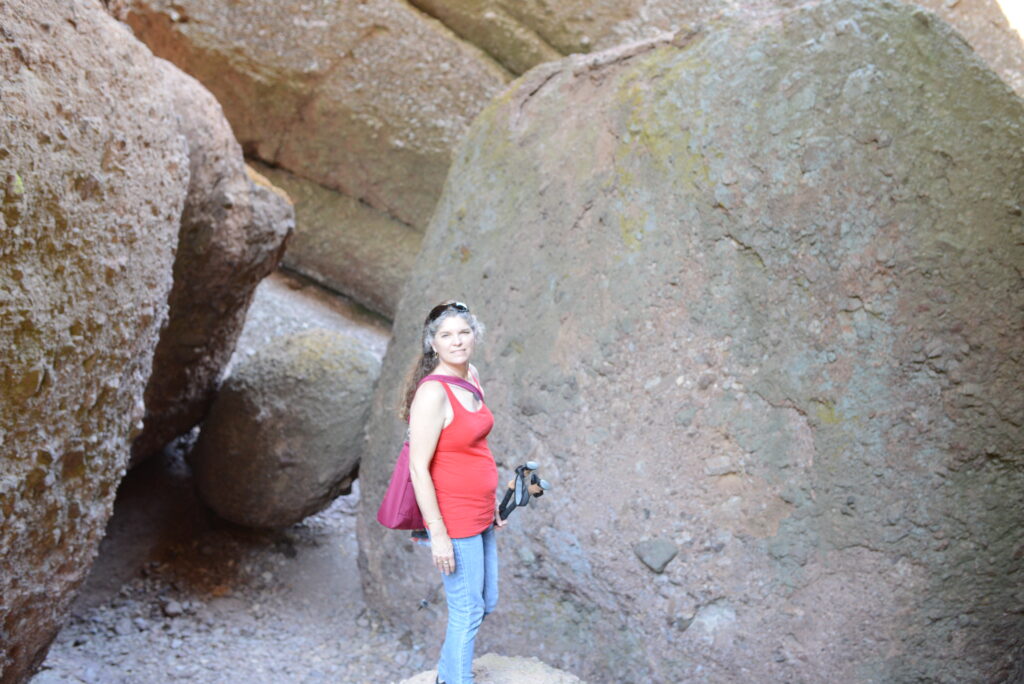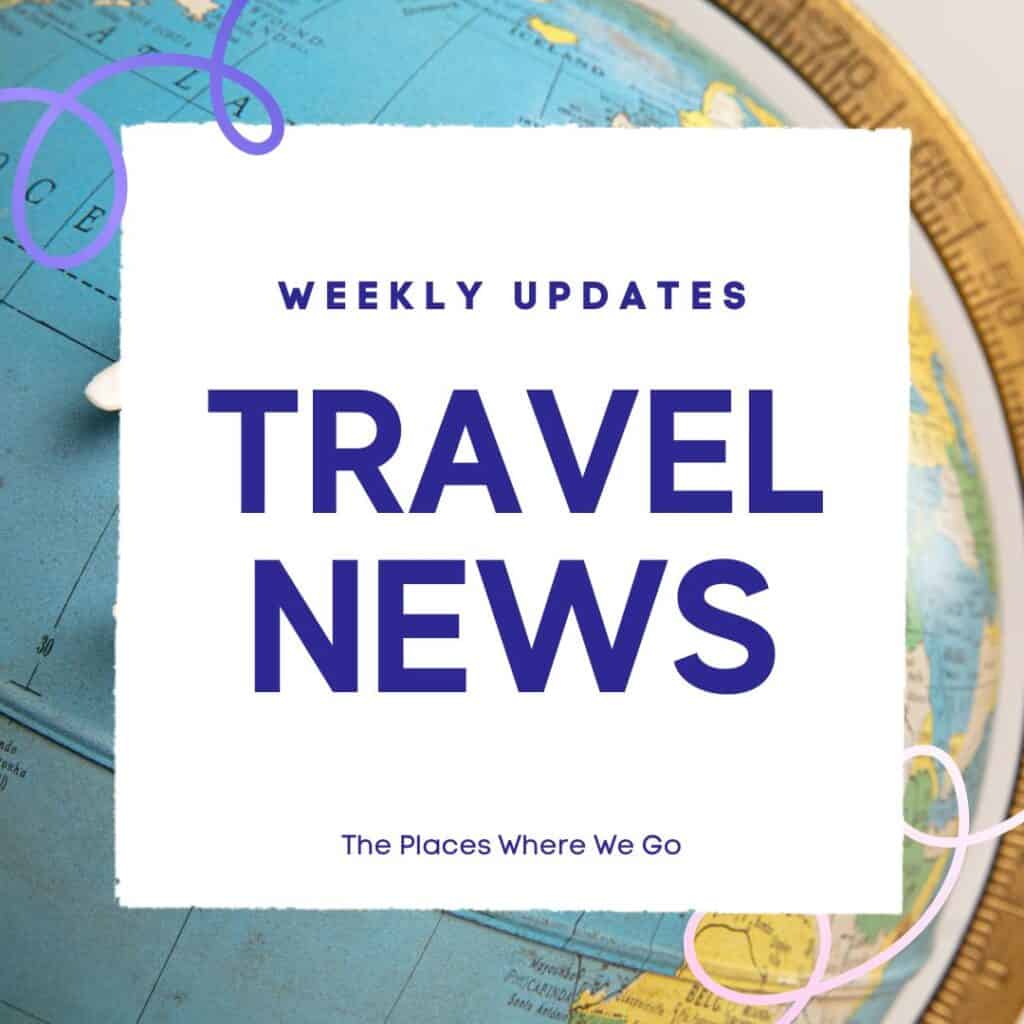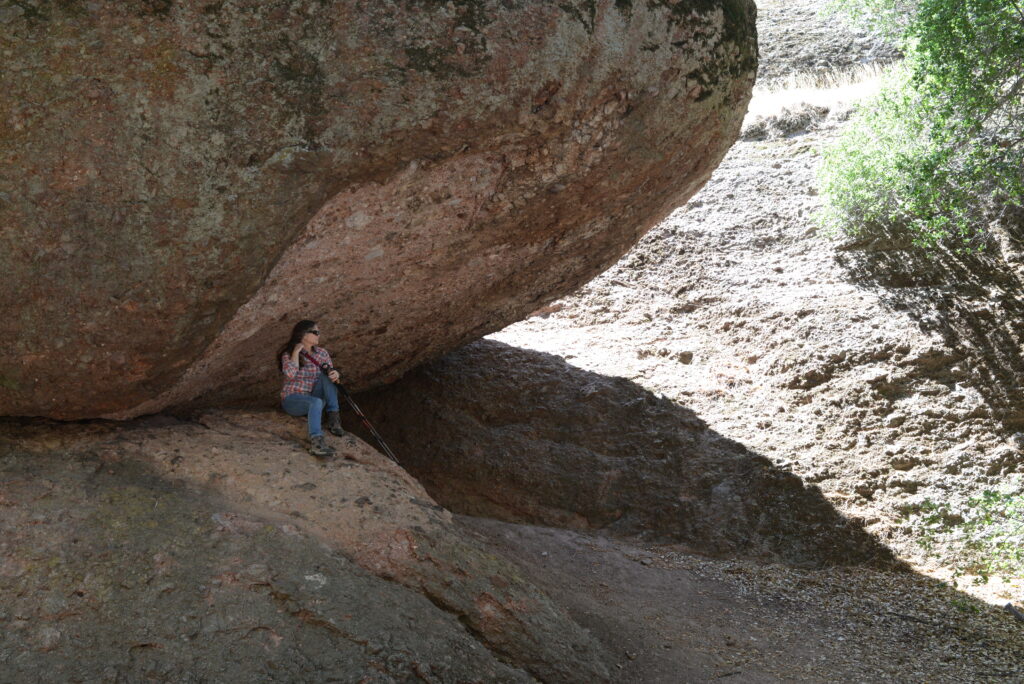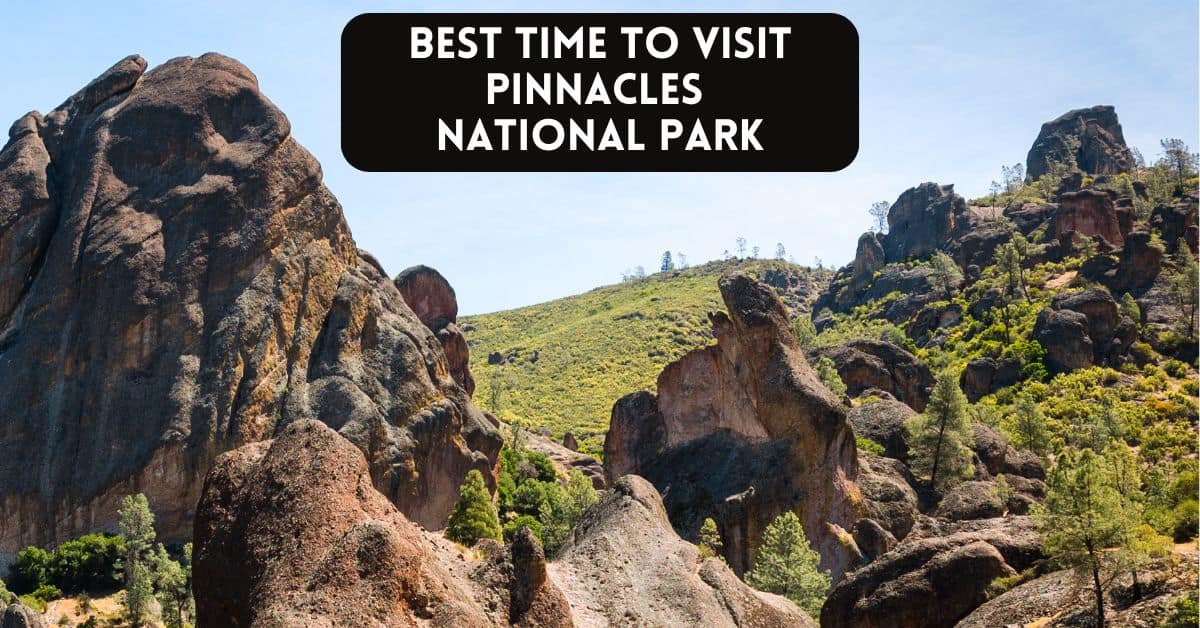The Best Time to Visit Pinnacles National Park
Pinnacles National Park is a captivating destination known for its unique rock formations, caves, and diverse wildlife. We’ve had the opportunity to visit several times in various seasons. In this post, we look at seasons of the year to find the best time to visit Pinnacles National Park.
The Places Where We Go contains affiliate links and is a member of the Amazon Services LLC Associates Program. As an Amazon Associate, we earn from qualifying purchases at no extra cost to you when you purchase using one of these Amazon links. Read our disclaimer and privacy policy for more information.
The Best Time To Visit Pinnacles National Park
Based on our experience, the best time to visit the park is spring (March to May) and autumn (September to November). During these seasons, the weather is mild, wildflowers bloom in vibrant colors, and the trails are ideal for hiking. Spring offers the additional bonus of spotting California condors soaring above the park’s peaks. Let’s look at what it’s like to visit Pinnacles National Park at various times of the year to help you plan your pest trip to this great place.

The Worst Time to Visit Pinnacles National Park
We can start by helping you avoid perhaps the worst time of year to visit this United States National Park. As we see this destination as primarily a hiking park, the worst time to visit Pinnacles National Park is during the summer months (June to August). During summer, temperatures often soar above 100°F (38°C). The intense heat can make your experience on hiking trails and other outdoor activities uncomfortable and dangerous without proper preparation. If any of the park’s moderate to challenging hikes are on your list of things to do, the heat of summer will make for an uncomfortable experience.
Winter, though cooler, can also be less appealing for some visitors due to occasional rain and muddy trails. We don’t mind getting mud on our hiking boots, though we recognize this isn’t for everyone.

Get Free Weekly Travel News Updates

Tips for Visiting Pinnacles National Park in Spring
- Hiking Options:
Balconies Cliffs Trail: This is the first trail we ever hiked at Pinnacles. Our visit in late Spring provided optimal weather.
High Peaks Trail: Enjoy pleasant weather and blooming wildflowers along this iconic trail during spring.
Moses Spring Trail: Hikers will also enjoy the Moses Spring Trail. It’s a moderately challenging trail spanning 1.2-2.4 miles that leads to Bear Gulch Reservoir. Along the way, you’ll see rock formations, a cave, a reservoir, and views. You can access the trail from a small parking lot at the trailhead.
Bear Gulch Cave Trail. During spring, you’ll more likely witness waterfalls inside the cave due to winter rains. However, check park conditions before your visit to avoid potential flooding risk. - Explore: Spring is a great time to visit Talus Caves.
- Spot Wildlife: Spring is an excellent time for birdwatching, including the chance to see California condors. We spent time at the Condor Overlook on our most recent trip. Sitting on the rocks and having our eyes looking in the canyon was so peaceful to watch these amazing birds.
- Plan Ahead: Spring is a popular season, so consider arriving early to secure parking and avoid crowds.
Tips for Visiting Pinnacles National Park in Summer
- Hike Early: If you hike at Pinnacles during summer, we recommend starting your hikes at dawn. This will help you beat the heat and enjoy cooler temperatures.
- Stay Hydrated: Bring plenty of water and wear breathable clothing.
- Sun Protection: Be prepared with sunscreen, sunglasses, and a hat.
- Explore the Caves: Bear Gulch Cave and Balconies Cave provide shaded areas and a break from the summer sun. Note that Bear Gulch Cave is typically closed between mid-May through mid-July to protect big-eared bats during the popping season.
Tips for Visiting Pinnacles National Park in Autumn
- Enjoy Mild Weather: Temperatures in autumn are similar to spring, making it a fantastic time for outdoor activities.
- Explore: Autumn weather is ideal for exploring Talus Caves.
- Photograph the Landscape: Autumn light enhances the beauty of the rugged terrain and rock formations.
- Check Park Events: Look for ranger-led programs and guided tours to enhance your visit.
Tips for Visiting Pinnacles National Park in Winter
- Embrace Solitude: Winter sees fewer visitors, offering a quieter experience.
- Explore: Consider hiking the Chalone Peak Trail. You’ll need to climb the challenging 3,304-foot elevation to reach North Chalone Peak – the highest point in this National Park. You are rewarded with views of the surrounding valleys from the summit.
- Prepare for Rain: Bring waterproof gear and check trail conditions before heading out.
- Limited Access: Winter may bring occasional rain, which could affect cave accessibility at Talus Caves.
- Watch for Wildlife: Cooler temperatures bring out different species, and the clear skies are ideal for stargazing.
- Research Hikes: Consider the trail difficulty and elevation changes before you begin.

Best Things to Do Anytime at Pinnacles National Park
- Hiking: Hiking is the best way to experience the park in our opinion. You’ll find trails for all skill levels. Many showcase stunning vistas and unique rock formations. The most popular hikes include:
High Peaks Trail (9.3-mile loop around rock spires),
Prewett Point Trail (0.9-mile round trip),
Condor Gulch Trail to High Peaks Trail Loop (5.6-mile trail with a 1,633-foot elevation gain). This is one of our favorites. You can watch our hike on a YouTube video.
Bear Gulch Cave Trail - Birdwatching: Pinnacles is home to a variety of birds, including the endangered California condor, which can be seen in flight throughout the year.
- Rock Climbing: The park’s unique volcanic rock formations are a favorite among climbers and accessible in all seasons.
- Cave Exploration: Bear Gulch Cave and Balconies Cave are open year-round, providing adventure and a glimpse into the park’s geological wonders.
- Photography: From dramatic landscapes to fascinating wildlife, Pinnacles offers endless opportunities for photography at any time of year.
- Stargazing: With minimal light pollution, the park is an excellent spot for stargazing, offering breathtaking night sky views.
The Places Where We Go is a Feedspot Top 100 Travel Podcast
Subscribe Via Your Favorite Podcast Player
Things to Know Before Visiting Pinnacles National Park
- Two Entrances: The park has East and West entrances, but they are not connected by a road. The shortest route between the two entrances is through King City on Highway 101. Plan your route accordingly. On each of our visits, we’ve selected a single side of the park as it is a bit of a drive to get from one side to the other.
- No Gas Stations: Fill up your tank before arriving, as there are no gas stations within the park.
- Stay Overnight: Consider camping at Pinnacles Campground or staying nearby to explore the park’s offerings fully. On our recent trip, we parked our Airstream at Yanks RV Resort in nearby Greenfield, CA. It was a reasonable drive from this RV Resort to the east entrance. Read our post RV Camping at Pinnacles National Park for more information.
- Bring the Essentials: Pack plenty of water, sunscreen, sturdy shoes, and a flashlight for cave exploration.
- Park Passes: Entry fees are required, so purchasing an America the Beautiful Pass can save money if you plan to visit other parks. The standard entrance fee ranges between $15 to $30—an annual pass is $55. However, we recommend the America The Beautiful Pass for $80, providing you access to U.S. National Parks for one year.
- Get a Stamp For Your National Park Passport Book: In 1908, President Theodore Roosevelt established this area as a National Monument. On January 10, 2013, President Obama redesigned the monument as a National Park.
- Formation Fun Fact: Pinnacles National Park in California is near the San Andreas Fault. The park’s geology results from the San Andreas Fault’s movement and the interaction of the Pacific plate and North American tectonic plate.
Additional Tips for a Memorable Visit
Best Activities at Pinnacles National Park
- Hiking: Trails range from easy to challenging, with highlights like the Condor Gulch and High Peaks Loop.
- Rock Climbing: The park’s unique formations attract climbers of all skill levels.
- Cave Exploration: Discover the intriguing Bear Gulch and Balconies Caves.
- Stargazing: The remote location offers exceptional night sky views.
Map via Google Maps
How to Get to Pinnacles National Park
The park is located in Central California, about 80 miles southeast of San Jose, California. It’s accessible from major cities like San Francisco (2 hours) and Los Angeles (4.5 hours). The East Entrance is near Hollister, and the West Entrance is near Soledad.
Best Times to See California Condors
Pinnacles is a release site for these endangered birds. The best times to spot them are during cooler mornings and evenings in spring and autumn. The first captive-bred California Condor was released in Southern California in 1992. in 2003, this North America location became a release site for the California Condor.
Conclusion
Pinnacles National Park is a year-round destination with unique seasonal highlights. Whether you visit in spring to see wildflowers, in autumn for mild weather, or in winter for a peaceful escape, planning your trip around the best times ensures a rewarding experience. By following the tips above, you’ll be well-prepared to explore this extraordinary park’s dramatic landscapes and natural wonders.
Thanks for reading our article. Happy travels and we hope to see you at the places where we go!
Julie & Art
#pinnaclesnationalpark
Watch Our YouTube Video at Pinnacles National Park
The Places Where We Go YouTube video at Pinnacles National Park recaps our hike on the Condor Gulch Trail.


